Discover Enterprise AI & Software Benchmarks
AI Code Editor Comparison
Analyze performance of AI-powered code editors
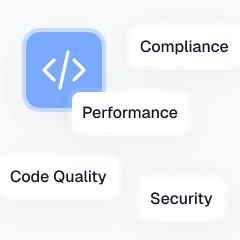
AI Coding Benchmark
Compare AI coding assistants’ compliance to specs and code security
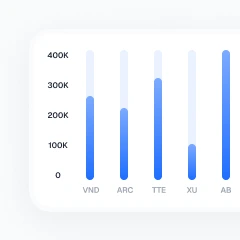
AI Gateway Comparison
Analyze features and costs of top AI gateway solutions
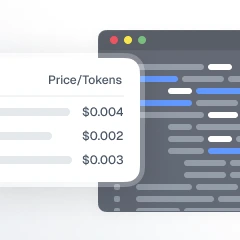
AI Hallucination Rates
Evaluate hallucination rates of top AI models
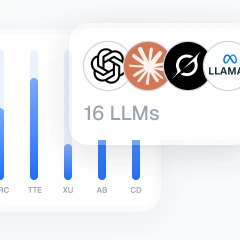
Agentic RAG Benchmark
Evaluate multi-database routing and query generation in agentic RAG
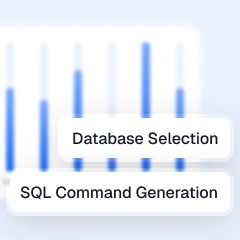
Cloud GPU Providers
Identify the cheapest cloud GPUs for training and inference

E-commerce Scraper Benchmark
Compare scraping APIs for e-commerce data

LLM Examples Comparison
Compare capabilities and outputs of leading large language models

LLM Price Calculator
Compare LLM models’ input and output costs

OCR Accuracy Benchmark
See the most accurate OCR engines and LLMs for document automation
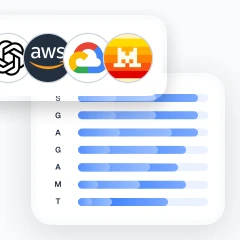
RAG Benchmark
Compare retrieval-augmented generation solutions

Screenshot to Code Benchmark
Evaluate tools that convert screenshots to front-end code
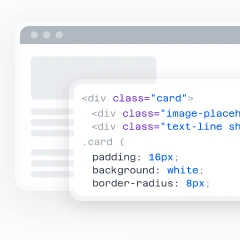
SERP Scraper API Benchmark
Benchmark search engine scraping API success rates and prices
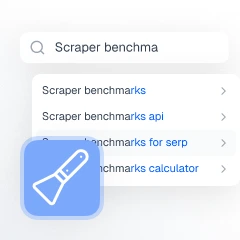
Vector DB Comparison for RAG
Compare performance, pricing & features of vector DBs for RAG

Web Unblocker Benchmark
Evaluate the effectiveness of web unblocker solutions

LLM Coding Benchmark
Compare LLMs is coding capabilities.

Handwriting OCR Benchmark
Compare the OCRs in handwriting recognition.

Invoice OCR Benchmark
Compare LLMs and OCRs in invoice.

AI Reasoning Benchmark
See the reasoning abilities of the LLMs.
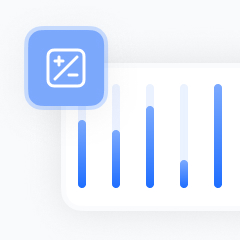
Speech-to-Text Benchmark
Compare the STT models' WER and CER in healthcare.
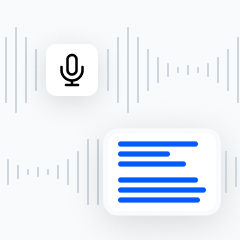
Text-to-Speech Benchmark
Compare the text-to-speech models.
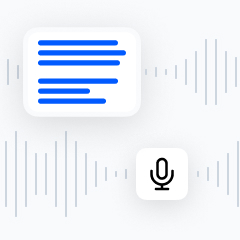
AI Video Generator Benchmark
Compare the AI video generators in e-commerce.

AI Bias Benchmark
Compare the bias rates of LLMs

Multi-GPU Benchmark
Compare scaling efficiency across multi-GPU setups.
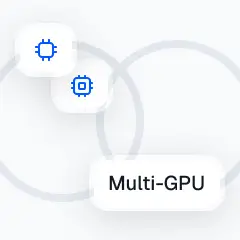
GPU Concurrency Benchmark
Measure GPU performance under high parallel request load.

Embedding Models Benchmark
Compare embedding models accuracy and speed.
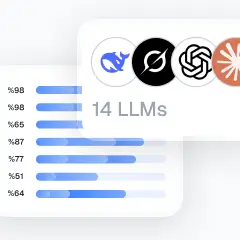
Open-Source Embedding Models Benchmark
Evaluate leading open-source embedding models accuracy and speed.
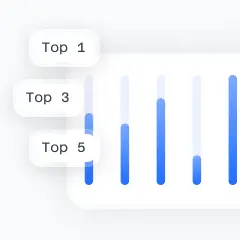
Text-to-SQL Benchmark
Benchmark LLMs’ accuracy and reliability in converting natural language to SQL.
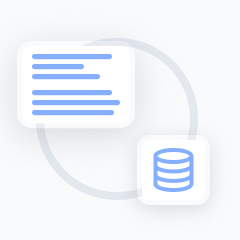
Hybrid RAG Benchmark
Compare hybrid retrieval pipelines combining dense & sparse methods.
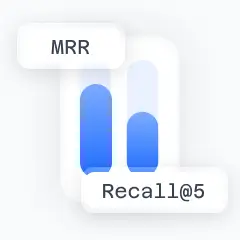
Latest Benchmarks
Text-to-Video Generator Benchmark in 2026
A text-to-video generator is an AI system that turns written prompts into short videos by generating visuals, motion, and sometimes audio directly from natural language.
Benchmark of 16 Best Open Source Embedding Models for RAG
Most embedding benchmarks measure semantic similarity. We measured correctness. We tested 16 open-source models, from 23M-parameter to 8B-parameter embeddings, on 490,000 Amazon product reviews, scoring each by whether it retrieved the right product review through exact ASIN matching, not just topically similar documents.
Top 9 AI Providers Compared in 2026
The AI infrastructure ecosystem is growing rapidly, with providers offering diverse approaches to building, hosting, and accelerating models. While they all aim to power AI applications, each focuses on a different layer of the stack.
Agentic Document Extraction: LandingAI & more in 2026
Agentic Document Extraction (ADE) is a specialized form of Optical Character Recognition (OCR) that extracts data from various file types. It combines document processing, data retrieval, structured output generation, and automation to streamline knowledge work. ADE stands out from traditional OCR by its ability to recognize complex document structures, such as tables, flowcharts, and images.
See All AI ArticlesLatest Insights
100+ AI Use Cases with Real Life Examples in 2026
During my ~2 decades of experience of implementing advanced analytics & AI solutions at enterprises, I have seen the importance of use case selection. I analyzed 100+ AI use cases, their real-life examples and categorized them by business function and industry.
Compare 20+ Responsible AI Platforms & Libraries in 2026
Responsible AI platform market includes two types of software. Follow the links to learn more: Enterprise-focused responsible AI platforms such as: Open-source responsible AI libraries that deliver specific functionality (e.g.
Benchmark Best 30 AI Governance Tools in 2026
We analyzed ~20 AI governance tools and ~40 MLOps platforms that deliver AI governance capability to identify the market leaders based on quantifiable metrics. Click the links below to explore their profiles: Compare AI governance software AI governance tools landscape below shows the relevant categories for each tool mentioned in the article.
AI Web Browsers Benchmark: Complete Selection Guide
We tested 9 AI web browsers, including Perplexity Comet, Arc Max, Microsoft Edge Copilot, and ChatGPT Atlas, across key performance metrics to determine which solutions deliver practical value for different workflows.
See All AI ArticlesAIMultiple Newsletter
1 free email per week with the latest B2B tech news & expert insights to accelerate your enterprise.
Data-Driven Decisions Backed by Benchmarks
Insights driven by 40,000 engineering hours per year
60% of Fortune 500 Rely on AIMultiple Monthly
Fortune 500 companies trust AIMultiple to guide their procurement decisions every month. 3 million businesses rely on AIMultiple every year according to Similarweb.
See how Enterprise AI Performs in Real-Life
AI benchmarking based on public datasets is prone to data poisoning and leads to inflated expectations. AIMultiple’s holdout datasets ensure realistic benchmark results. See how we test different tech solutions.
Increase Your Confidence in Tech Decisions
We are independent, 100% employee-owned and disclose all our sponsors and conflicts of interests. See our commitments for objective research.
